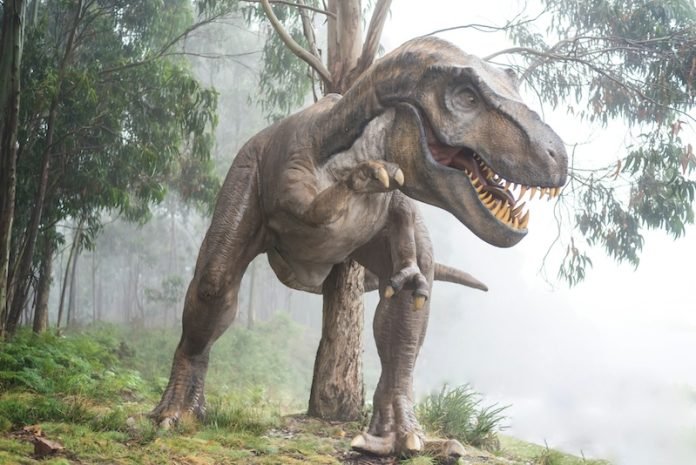
For years, scientists have been puzzled by a particular set of dinosaur fossils. Initially, these fossils, found in Montana in 1942, were believed to be young T. rex specimens.
However, a new twist in the tale has emerged, thanks to the work of two researchers, Dr. Nick Longrich from the University of Bath and Dr. Evan Saitta from the University of Chicago.
Their recent study has reignited the debate about the identity of these fossils.
By closely analyzing the growth rings and anatomy of the fossils, they’ve reached a startling conclusion: these weren’t young T. rexes at all, but rather adults of a different species, the Nanotyrannus lancensis.
The Nanotyrannus, first identified decades ago but then thought to be a juvenile T. rex, actually had several distinct features. They were smaller than T. rexes, with narrower jaws, longer legs, and bigger arms.
The research, published in Fossil Studies, indicates that these dinosaurs reached a maximum size of around 900-1500 kilograms and five meters in length, just a fraction of the size of the massive T. rex.
Dr. Longrich was surprised by the findings. “I didn’t expect it to be quite so conclusive,” he said. The growth rings in the Nanotyrannus bones suggested they were nearing full size, not growing rapidly as one would expect in young T. rexes.
Despite trying different models, the researchers consistently found low growth rates, challenging the idea that these fossils were young T. rexes.
Another compelling piece of evidence was the lack of fossils showing characteristics of both Nanotyrannus and T. rex. Every fossil examined could be confidently identified as one species or the other.
Additionally, the growth patterns in other tyrannosaurs didn’t align with the hypothesis that these were young T. rexes. For example, young Tarbosaurus, a close relative of T. rex, already show adult-like features, a pattern not seen in Nanotyrannus.
The mystery deepens with the question: if Nanotyrannus isn’t a juvenile T. rex, then where are the young T. rexes? Dr. Longrich and Dr. Saitta found the answer in an overlooked fossil stored in a museum in San Francisco.
This fossil, representing a young T. rex, had distinctive skull features aligning it with Tyrannosaurus but not with Nanotyrannus.
This discovery suggests that Nanotyrannus was a separate species, with a build and lifestyle different from the T. rex.
The Nanotyrannus was more agile and fast, relying on speed rather than size and strength like the T. rex. Its long arms and other features suggest it may even belong to a different family of predatory dinosaurs.
This study adds to the ongoing debate in paleontology about the Nanotyrannus. Longrich, who was initially skeptical about the existence of Nanotyrannus, admits the complexity of identifying species based on incomplete skeletons.
This discovery highlights how much is still unknown about the dinosaur world and raises questions about the diversity of these ancient creatures.
“It’s amazing to think how much we still don’t know about the most famous of all the dinosaurs,” Longrich remarked, suggesting that our understanding of dinosaur diversity might still be evolving.
The research findings can be found in Fossil Studies.
Copyright © 2024 Knowridge Science Report. All rights reserved.




